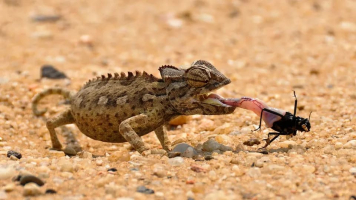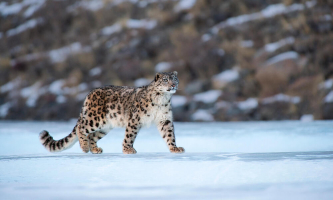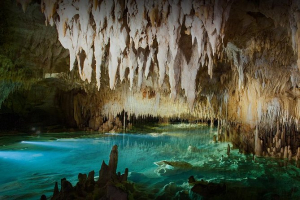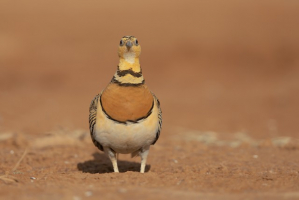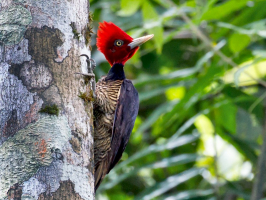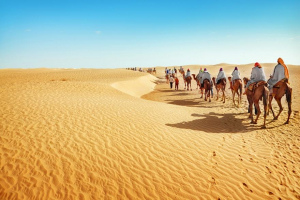Top 10 Animals Amazingly Adapted to the Sahara Desert
The Sahara Desert is the largest desert in the world, it encompasses practically all of North Africa. Severely hot days and extremely cold nights characterize ... read more...its climate. However, despite the extreme conditions in the region, there are still hundreds of animal species thriving to live here. These Sahara Desert animals have adapted well to their environment and their bodies are well-equipped to survive in the cruelty of nature. Here is a list of amazingly adaptive Sahara desert animals, let's find out!
-
The Dromedary Camel is a large even-toed ungulate, of the genus Camelus, with one hump on its back. It is the tallest of the three species of the camel; adult males stand 1.8–2.4 m at the shoulder, while females are 1.7–1.9 m tall. Males typically weigh between 400 and 690 kg (880 and 1,520 lb), and females weigh between 300 and 540 kg (660 and 1,190 lb). The long, curving neck, small chest, single hump (as opposed to the two found on the Bactrian camel and wild Bactrian camel), and long hairs on the throat, shoulders, and hump are the species' distinguishing characteristics. Typically, the coat has a brown color. The hump is formed of fat that is held together by fibrous tissue and is at least 20 cm tall.
In the wild, the dromedary hasn't been seen in a natural setting in about two thousand years. It was likely domesticated for the first time on the Arabian Peninsula around 4,000 years ago or in Somalia, where murals in Laas Geel depict it from more than 5,000 to 9,000 years ago. The dromedary lived in the Sahara Desert and other arid areas in the wild. In the Old World, the domesticated dromedary is typically found in semi-arid to dry areas, primarily in Africa and the Arabian Peninsula, however, there is also a sizable feral population in Australia. Products of the dromedary, including its meat and milk, support several North African tribes; it is also commonly used for riding and as a beast of burden.
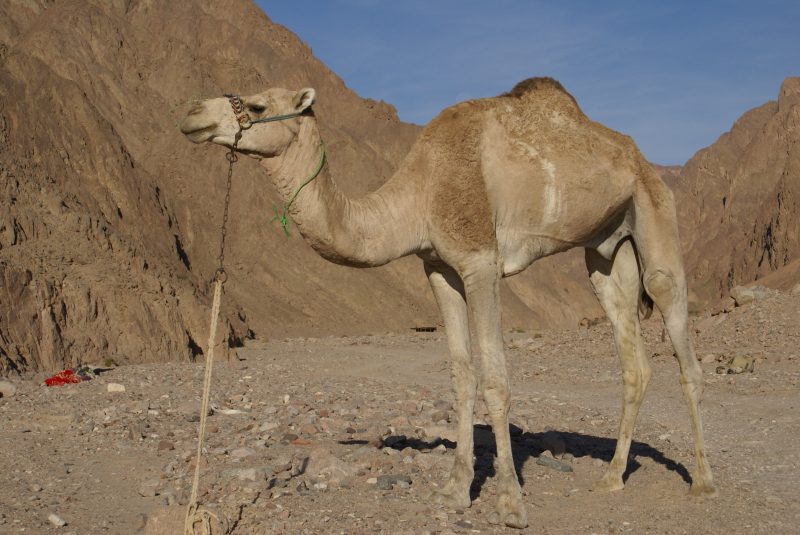
Wikipedia 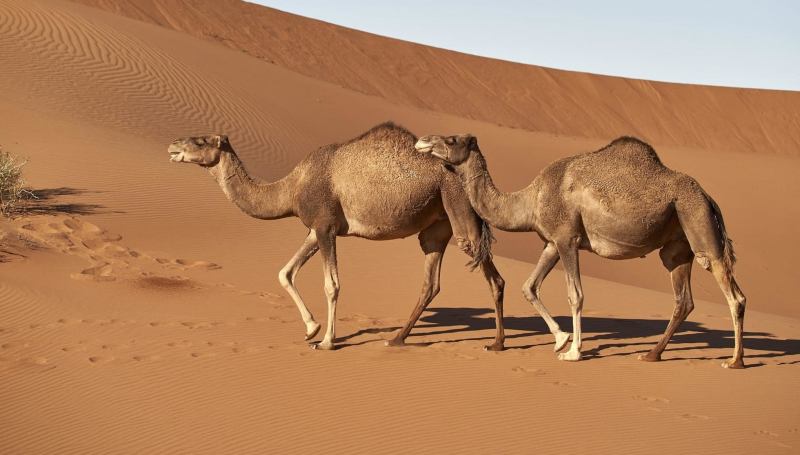
Kidadl -
The Goitered Gazelle (Gazella subgutturosa) is a gazelle found in Georgia, Azerbaijan, Iran, parts of Iraq and Pakistan, Afghanistan, Tajikistan, Kyrgyzstan, Uzbekistan, Turkmenistan, Kazakhstan, and northwest China and Mongolia. It runs at high speed, without the leaping, bounding gait seen in other gazelle species. Throughout much of its range, the goitered gazelle migrates seasonally. The specific name, meaning "full below the throat", refers to the male having an enlargement of the neck and throat during the mating season.
Goitered gazelle live in a variety of semiarid and desert habitats that are found in foothills and mountain valleys. They stay away from cultivated land and cattle grazing areas and feed at the fringe of such areas. Clayey and sandy soil, basalt deserts, and salt flats are all examples of their environments. They can live everywhere from virtually vegetated environments to places where grasses, forbs, and shrubs can grow. The northern distribution of goitered gazelles is constrained by regions with 10 to 15 cm of wintertime snowfall. They live in windy, snow-free regions and seek protection from the wind in deep valleys, low mountain canyons, or thick vegetation during the winter.
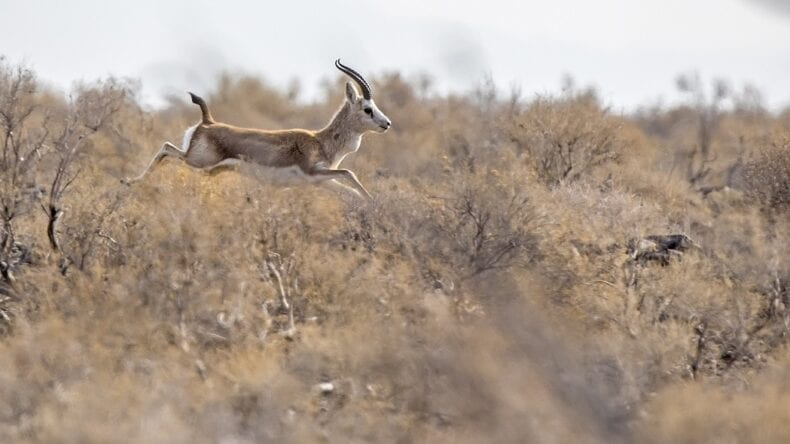
IUCN Save Our Species 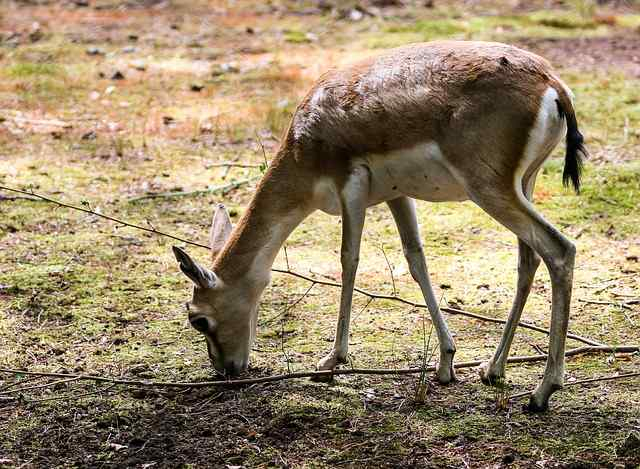
iStock -
The Addax (Addax nasomaculatus), also known as the white antelope and the screwhorn antelope, is an antelope native to the Sahara Desert. The pale antelope, as implied by its alternate name, has long, twisted horns that range in length from 55 to 80 cm for females and 70 to 85 cm for males. At the shoulder, men stand between 105 and 115 cm and women between 95 and 110 cm. Because the females are smaller than the males, they exhibit sexual dimorphism. In the winter, the coat is greyish-brown with white hindquarters and legs, and long, brown hair covers the head, neck, and shoulders. In the summer, the coat turns almost entirely white or sandy blonde.
The addax mostly consumes grasses and the leaves of any nearby bushes, shrubs, and leguminous plants. They can survive for extended periods of time without water, which makes them well-adapted to dwell in their desert habitat. The Addax live in herds of five to twenty animals, both males, and females. The oldest female serves as their leader. The addax moves slowly, making it easy prey for people, lions, leopards, cheetahs, and African wild dogs. Winter and the first several weeks of spring are the busiest times for breeding. Arid areas, semideserts, and stony and sandy deserts are addax's native habitats.
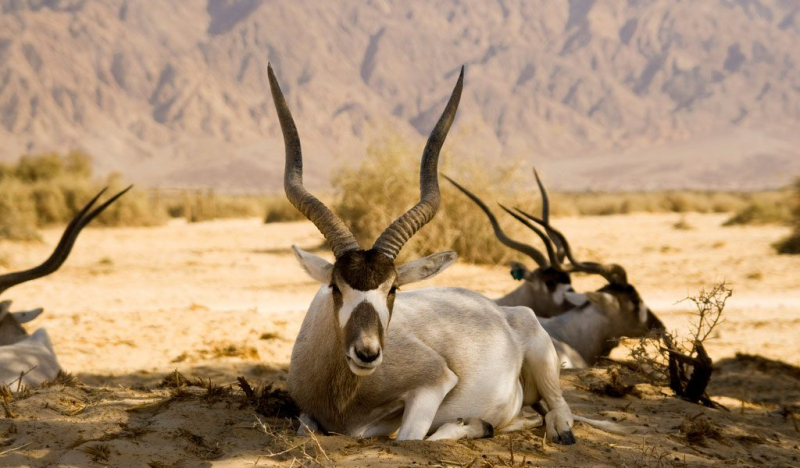
Animal Corner 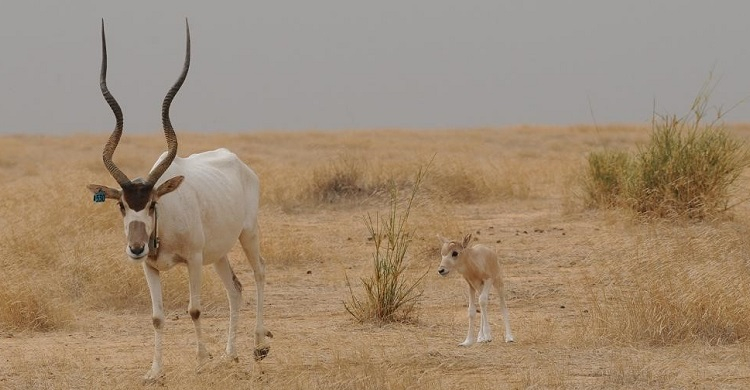
iStock -
The Desert Horned Viper (Cerastes cerastes) or Saharan horned viper is a venomous species of viper native to the deserts of northern Africa and parts of the Arabian Peninsula and the Levant. The snake is common in Iraq but is also found in Syria, Saudi Arabia, Yemen, Jordan, Israel, and Kuwait. They can also be found in parts of North Africa including Libya, Egypt, and Sudan.
The highest overall length is 85 cm, with the average total length (body and tail) being 30-60 cm. males are generally smaller than females. The existence of supraorbital "horns", one above each eye, is one of this species' most recognizable features. However, these might be smaller or not present (see genus Cerastes). The eyes are large and positioned on the sides of the head. Males have larger heads and eyes than females, and there is a strong sexual dimorphism. They are typically ambushed predators in the wild, lying buried in the sand next to rocks or beneath vegetation. They attack quickly when approached, clinging onto their prey (small birds and rodents) until the poison takes effect.
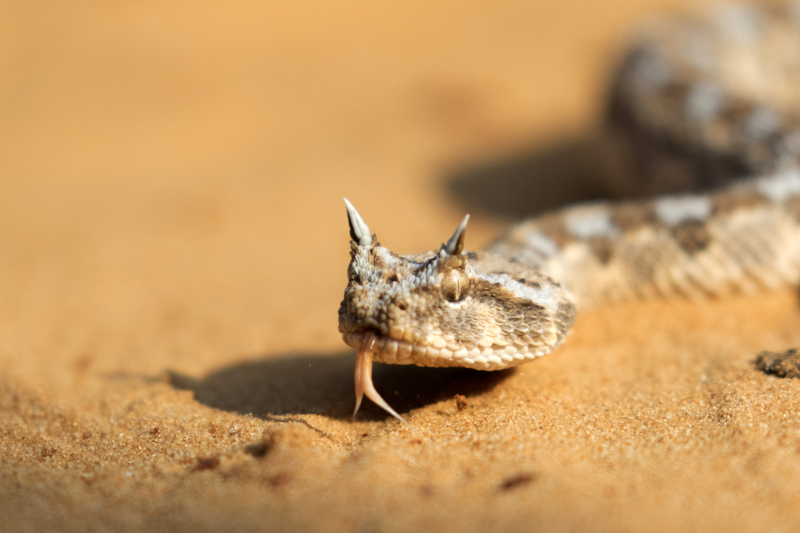
Wikimedia Commons 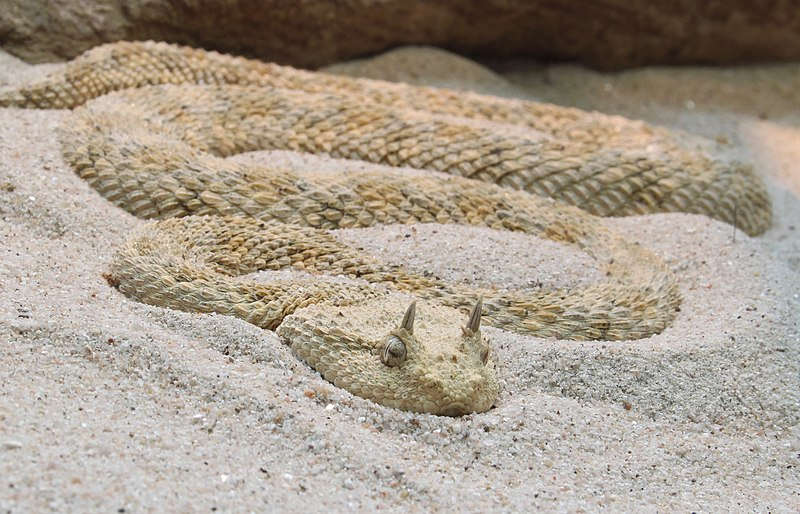
Wikipedia -
The Fennec Fox (Vulpes zerda) is a small crepuscular fox native to the deserts of North Africa, ranging from Western Sahara to the Sinai Peninsula. It's very huge ears, which are used to vent heat and listen for underground prey, are its most distinguishing characteristic. The smallest type of fox is the fennec. Its coat, ears, and kidney functions have evolved to fit the hot, dry climate of the desert. It primarily consumes birds, small animals, and insects. The fennec has a life span of up to 14 years in captivity and roughly 10 years in the wild.
The Verreaux's eagle-owl, jackals, and other large mammals are its principal predators. Families of fennecs create burrows in the sand for protection and living. These burrows, which may be as large as 120 m2 (1,292 sq ft), are next to those of neighboring families. The frequency of sightings, which is approximated in the absence of precise population data, shows that the fennec is not currently in danger of going extinct. Animals kept in captivity are the only source of information on social relationships. The native peoples of North Africa appreciate the fennec's fur, and in some parts of the world, it is regarded as an exotic pet.
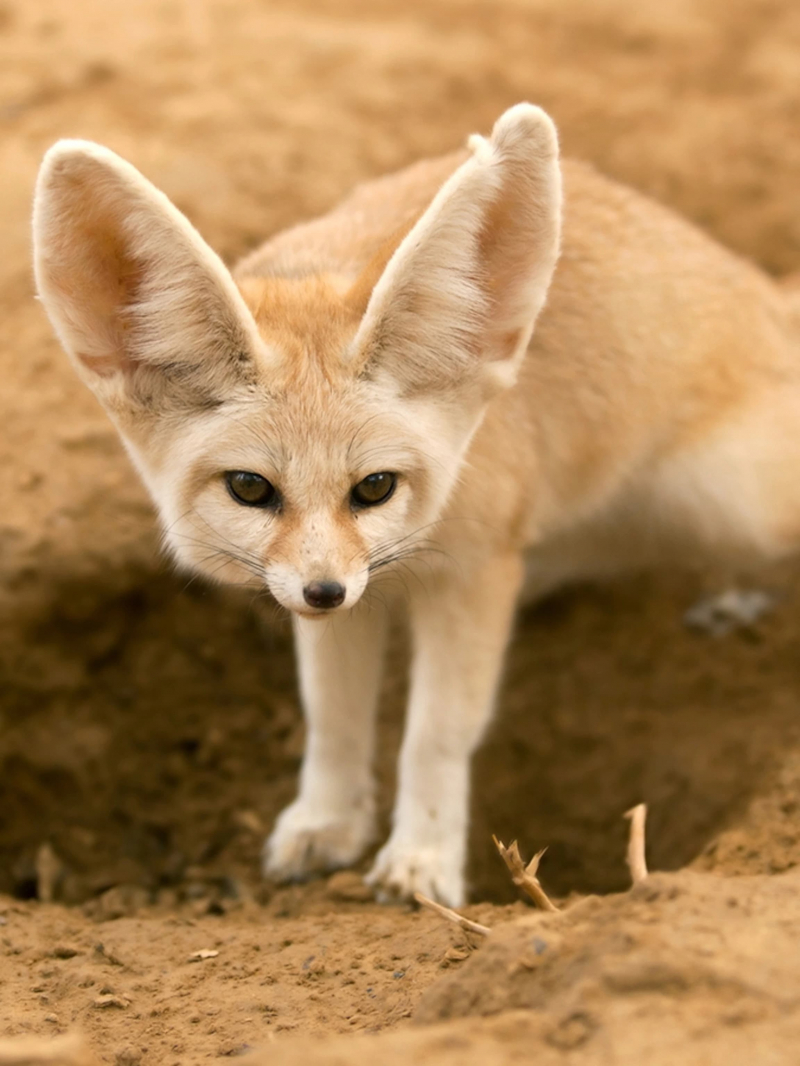
National Geographic Kids 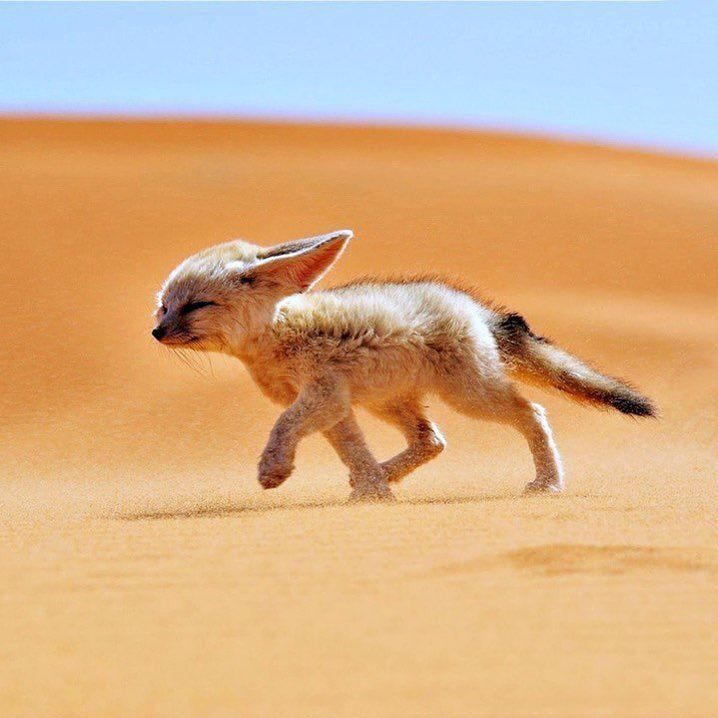
Pinterest -
The Deathstalker (Leiurus quinquestriatus) is a species of scorpion, a member of the family Buthidae. It is also known as the Palestine yellow scorpion, Omdurman scorpion, Naqab desert scorpion, and many other colloquial names, which generally originate from the commercial captive trade of the animal. From North Africa to the Middle East, it can be found in areas of scrubland and desert. From Algeria and Mali in the west through Egypt, Ethiopia, Asia Minor, and the Arabian Peninsula in the east, to Kazakhstan and western India in the northeast and southeast, its range spans a vast area in the Sahara, Arabian Desert, Thar Desert, and Central Asia.
One of the most dangerous scorpion species is the deathstalker. Its venom has a potent blend of neurotoxins with a low lethal dose. Although the sting of this scorpion is extremely painful, a healthy adult human would not typically die from it. However, people who are allergic or have a cardiac ailment are far more at danger than small children, the old, or the infirm. Any envenomation carries the risk of anaphylaxis, an allergic reaction that could be fatal. According to an Israeli study, envenomation-related pancreatitis occurs frequently.
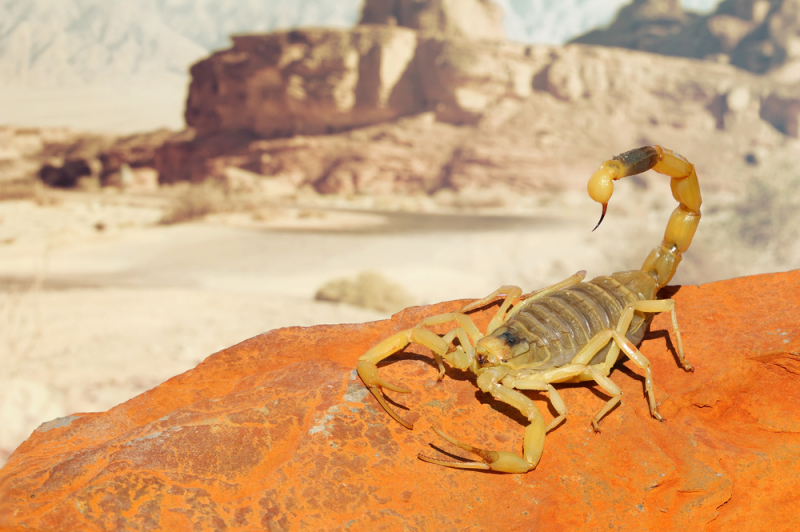
Discover Magazine 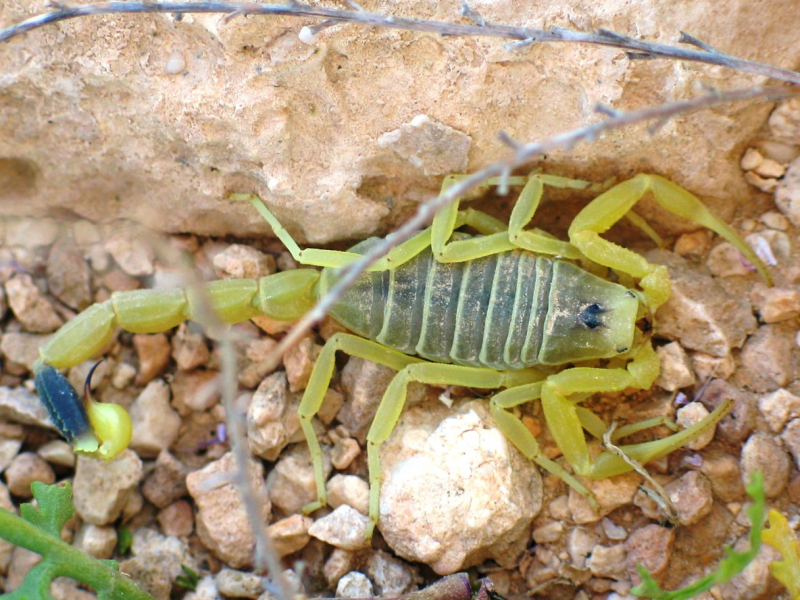
Wikipedia -
The enormous, flightless Ostrich can be found exclusively in Africa. The adult male ostrich, which is the largest living bird in Africa, may grow to a height of 2.75 meters and a weight of more than 150 kilograms. The female is somewhat smaller. While females are primarily brown in color, males are primarily black in color with white plumes on their wings and tails. Depending on the season, ostriches can be spotted alone, in couples, in small flocks, or in massive gatherings. Ostriches, one of the adaptable Sahara Desert species, can run at a speed of 40 mph, which puts them among the world's fastest land animals. This speed is comparable to that of gazelles.
The species is capable of traveling long ways that help them to spot and avoid predators. They typically defend themselves by kicking their longs when attacked. They adore eating seeds, roots, and leaves. They are farmed worldwide, particularly for their feathers as they are used as decoration and feather dusters. Their skin is also used for leather products.
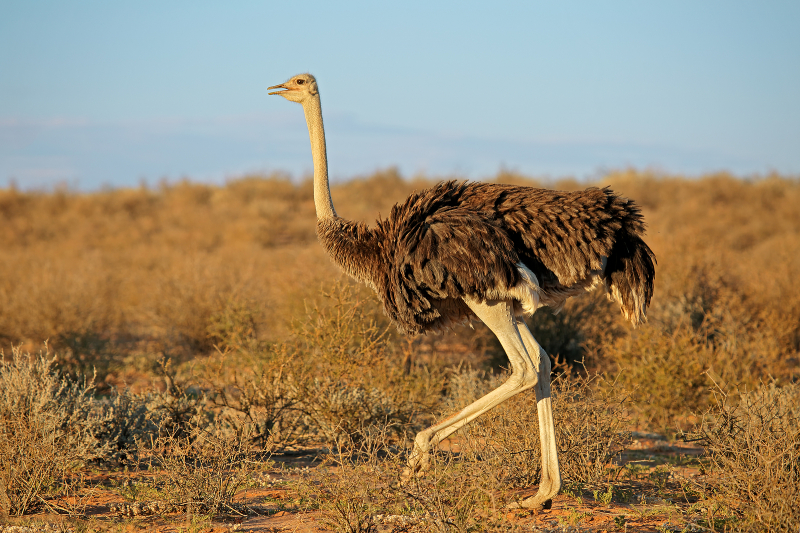
Pinterest 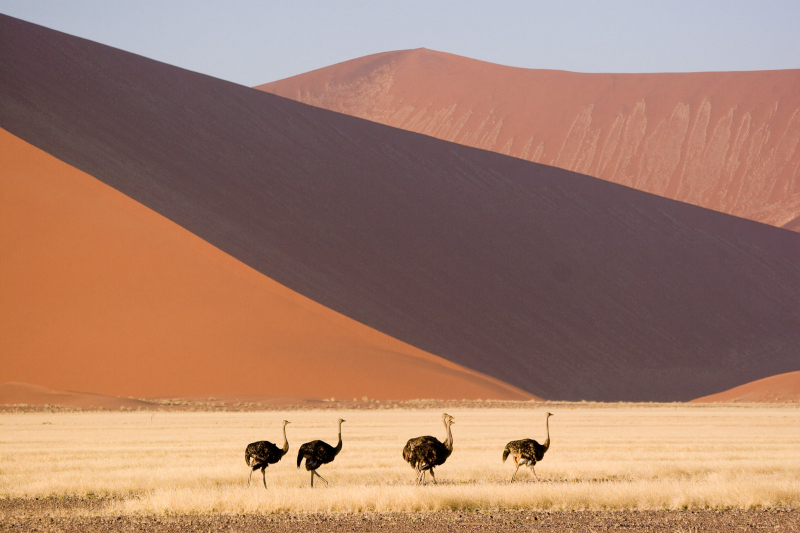
Wikimedia Commons -
The Arabian Oryx or white oryx (Oryx leucoryx) is a medium-sized antelope with a distinct shoulder bump, long, straight horns, and a tufted tail. Due to their speed and stamina, Arabian oryxes prefer to roam in areas of gravel or hard sand, where they are safe from the majority of predators and most foot hunters. They were once common in the flat parts of Saudi Arabia's sand deserts between the softer dunes and ridges.
The Arabian oryx eats a wide variety of plant material, including buds, herbs, fruit, tubers, and roots, although their primary feeds are grasses. After occasional rains, herds of Arabian oryxes graze on the newly sprung plants. They can go without water for several weeks. The Arabian oryx creates tiny depressions in the soft ground beneath bushes or trees for resting when it isn't exploring its surroundings or feeding. They can sense rain from a distance and move in the direction of newly emerging plant growth. A herd typically has 10 or fewer members, though this number can fluctuate widely (up to 100 have occasionally been documented).
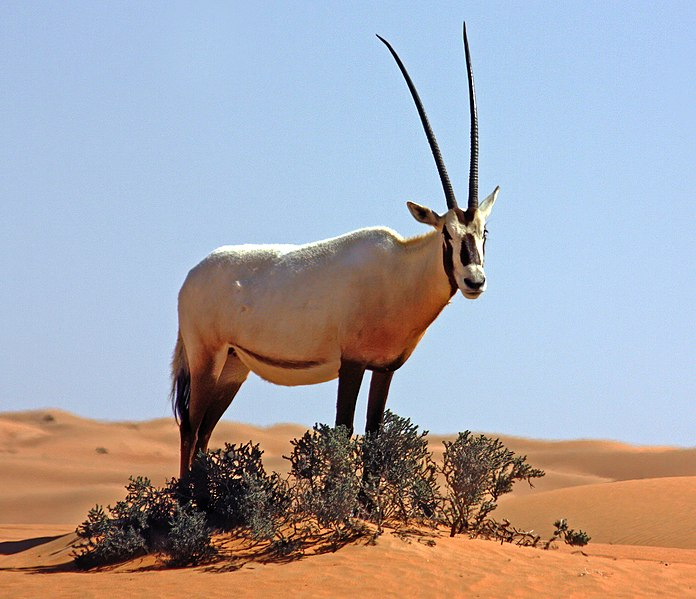
Wikipedia 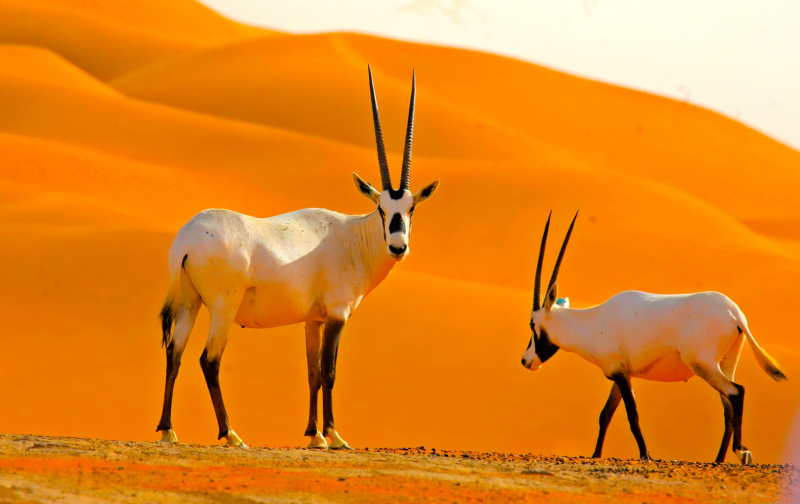
YouPic -
The Desert Monitor (Varanus griseus) is a species of monitor lizards of the order Squamata found living throughout North Africa and Central and South Asia. Their bodies typically have a range of colors, from light brown and yellow to grey. They can grow to total body lengths of about two meters, but their normal length is about one meter. Along with yellow spots on their backs, these lizards can also have horizontal bands on either their tails or backs. Their young are often a vivid orange color and have recognizable bands across their backs that may disappear as they get older.
This animal is a carnivore, like the majority of the species in the Varanus genus. The species will prey on smaller mammals, reptiles, birds, amphibians, insects, or other invertebrates if the opportunity arises, although its preferred prey are mice, eggs, or fish. The breeding season for desert monitors typically lasts from May through July. The lizards typically lay their eggs from the end of June to the beginning of July, with copulation taking place in May and June. The eggs are nurtured between 29 and 31 °C, and they typically hatch after 120 days. The infant lizards are about 25 cm long overall when they are born.
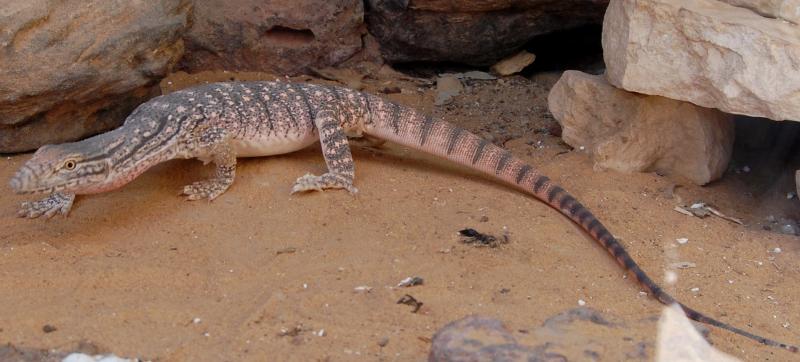
Wikipedia 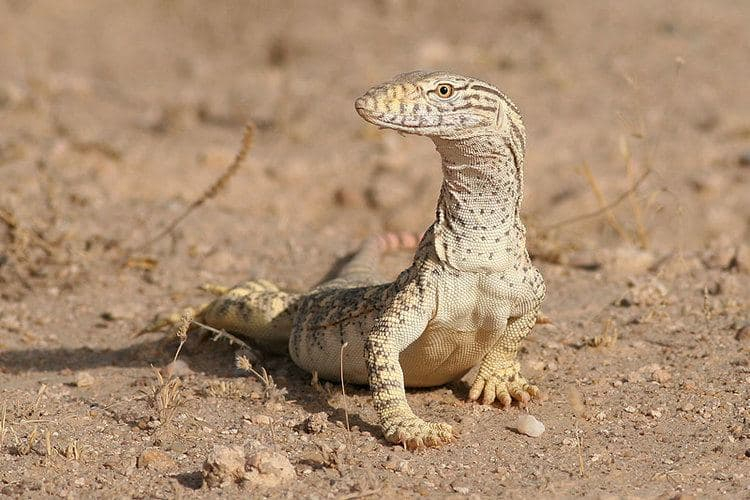
Alchetron -
Saharan Cheetahs are sometimes known as Northwest African cheetahs. Their physical makeup and way of life have adjusted to the harsh physical environment of the Sahara Desert. Compared to the rest of their species, these cheetahs are more active at night. They are able to conserve water and avoid the intense heat of the desert sun thanks to this habit. They look different from other varieties of cheetahs. Their coats are shorter and nearly white in hue. Their markings range from dark brown to light brown in tone. Sometimes they don't have any spots on their faces, and their tear stripes aren't present. They have a little smaller physique than other varieties of cheetahs.
Antelopes are one of their favorite foods. Hares and other small mammals are their second choice if there are no antelopes in the area. They may go for several days without drinking any water. Their alternative source of water is the blood of the prey they seek. Cheetahs are lone creatures. They don't frequently move from one location to another. Small groups of cheetahs exist, and these groups are often made up of a mother and her developing cubs. Cheetahs from the Sahara are currently one of the world's Critically Endangered species. There are approximately 250 of them in the wild. The Sahara Desert is home to this particular breed of the cheetah.
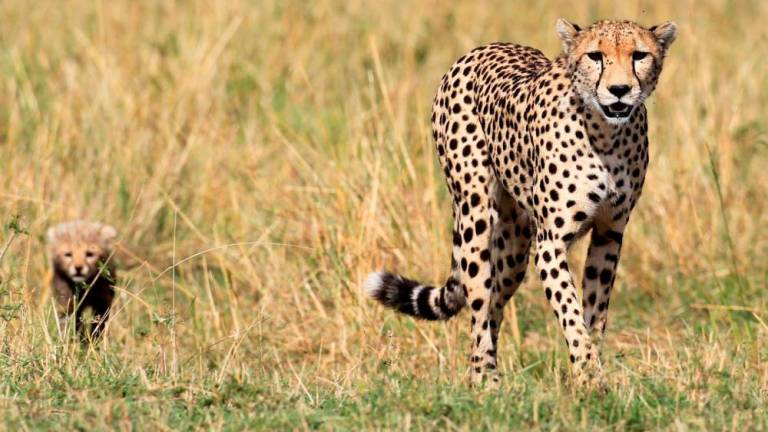
Nestia 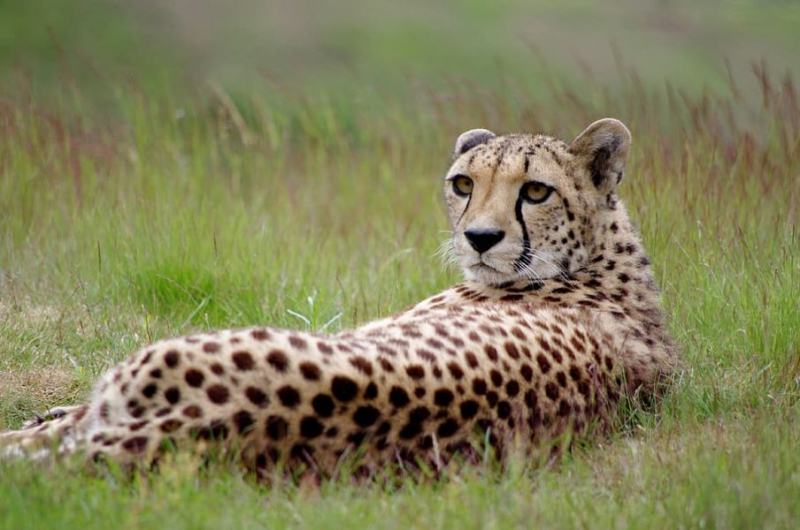
Wikimedia Commons












